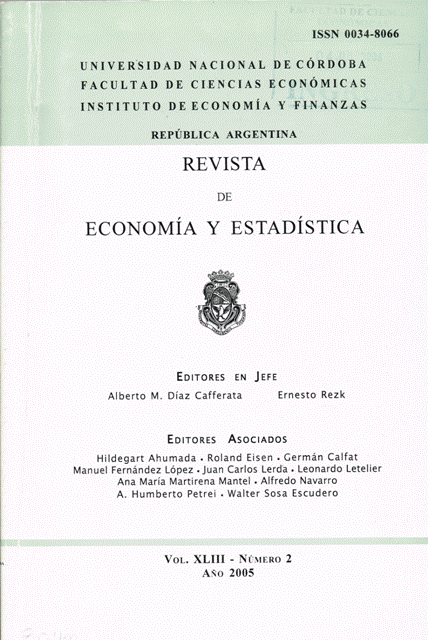Análisis del desempleo urbano a través de un estudio comparativo de métodos de clasificación
DOI:
https://doi.org/10.55444/2451.7321.2005.v43.n2.3818Keywords:
condición de actividad, regresión logística, vecino más cercano, árboles de decisión, encuesta permanente de hogaresAbstract
Este trabajo propende a identificar los factores de riesgo que inciden en la precariedad laboral de la Población Económicamente Activa. Se adoptó como plataforma informativa la base de datos de la Encuesta Permanente de Hogares, octubre 2002, relevada en las ciudades de Córdoba, Rosario y en el gran Buenos Aires. El efecto de las variables predictoras sobre la condición de actividad del encuestado se estimó a través de los Análisis de Regresión Logística y Árboles de Decisión. Adicionalmente, y a los fines de mejorar la performance de la clasificación obtenida, se aplicaron los métodos de Redes Neuronales y Vecino más Cercano.
Downloads
Downloads
Published
Issue
Section
License
Copyright (c) 2005 Margarita Díaz, Fernando Ferrero, Cecilia Díaz, Patricia Caro, María Inés Stimolo

This work is licensed under a Creative Commons Attribution-NonCommercial-NoDerivatives 4.0 International License.
Authors who have publications with this journal agree to the following terms:
Authors retain their copyright and grant the journal the right of first publication of their work, which is simultaneously subject to the Creative Commons Attribution-NonCommercial-NoDerivatives 4.0 International License that allows third parties to share the work provided that its author and first publication in this journal are indicated.
Authors may adopt other non-exclusive licensing arrangements for distribution of the published version of the work (e.g. depositing it in an institutional telematic archive or publishing it in a monographic volume) as long as the initial publication in this journal is indicated.
Authors are allowed and encouraged to disseminate their work via the Internet (e.g. in institutional telematic archives or on their website) before and during the submission process, which can lead to interesting exchanges and increase citations of the published work. (See The Open Access Effect)










